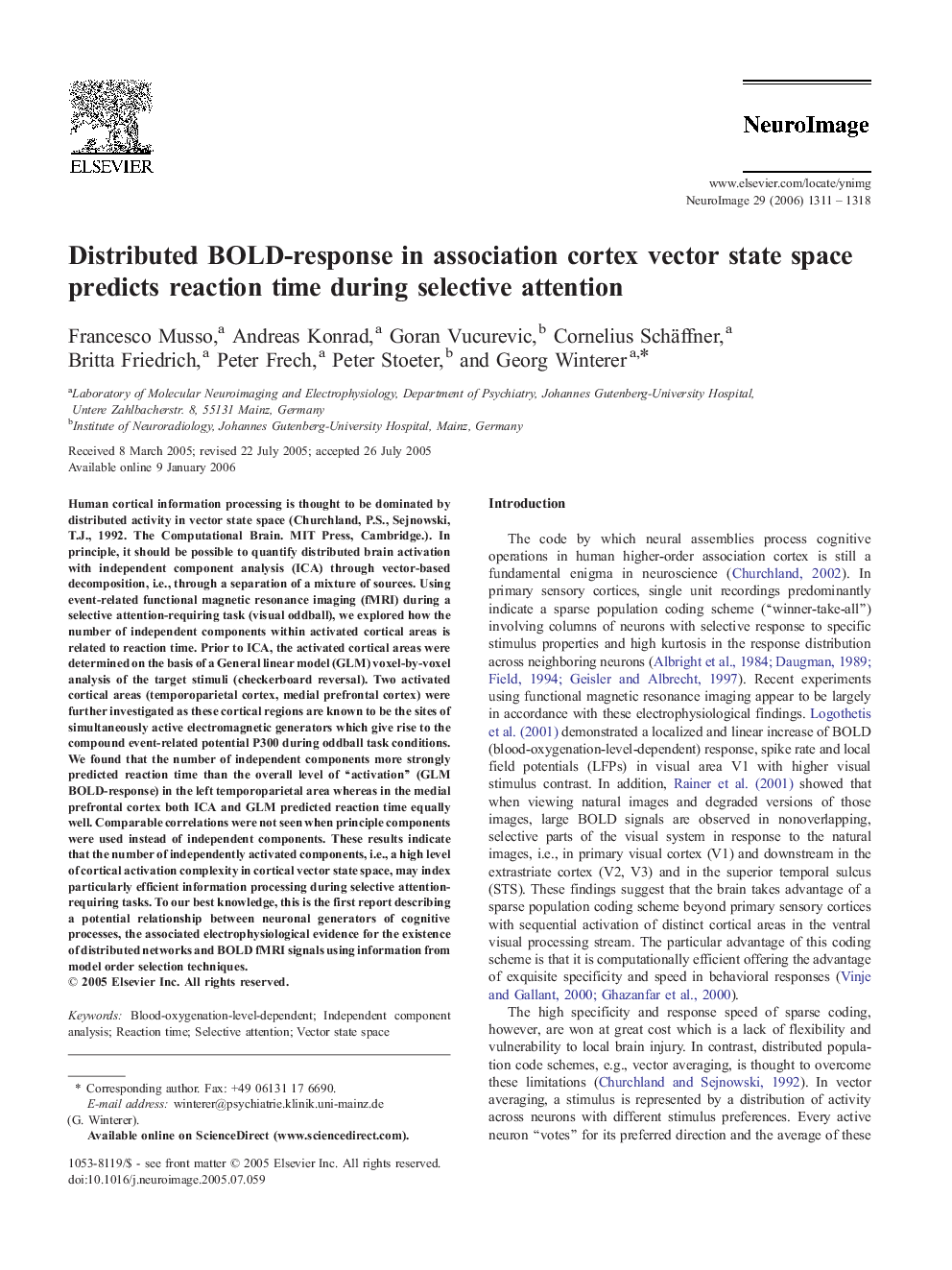| Article ID | Journal | Published Year | Pages | File Type |
|---|---|---|---|---|
| 3074668 | NeuroImage | 2006 | 8 Pages |
Human cortical information processing is thought to be dominated by distributed activity in vector state space (Churchland, P.S., Sejnowski, T.J., 1992. The Computational Brain. MIT Press, Cambridge.). In principle, it should be possible to quantify distributed brain activation with independent component analysis (ICA) through vector-based decomposition, i.e., through a separation of a mixture of sources. Using event-related functional magnetic resonance imaging (fMRI) during a selective attention-requiring task (visual oddball), we explored how the number of independent components within activated cortical areas is related to reaction time. Prior to ICA, the activated cortical areas were determined on the basis of a General linear model (GLM) voxel-by-voxel analysis of the target stimuli (checkerboard reversal). Two activated cortical areas (temporoparietal cortex, medial prefrontal cortex) were further investigated as these cortical regions are known to be the sites of simultaneously active electromagnetic generators which give rise to the compound event-related potential P300 during oddball task conditions. We found that the number of independent components more strongly predicted reaction time than the overall level of “activation” (GLM BOLD-response) in the left temporoparietal area whereas in the medial prefrontal cortex both ICA and GLM predicted reaction time equally well. Comparable correlations were not seen when principle components were used instead of independent components. These results indicate that the number of independently activated components, i.e., a high level of cortical activation complexity in cortical vector state space, may index particularly efficient information processing during selective attention-requiring tasks. To our best knowledge, this is the first report describing a potential relationship between neuronal generators of cognitive processes, the associated electrophysiological evidence for the existence of distributed networks and BOLD fMRI signals using information from model order selection techniques.
